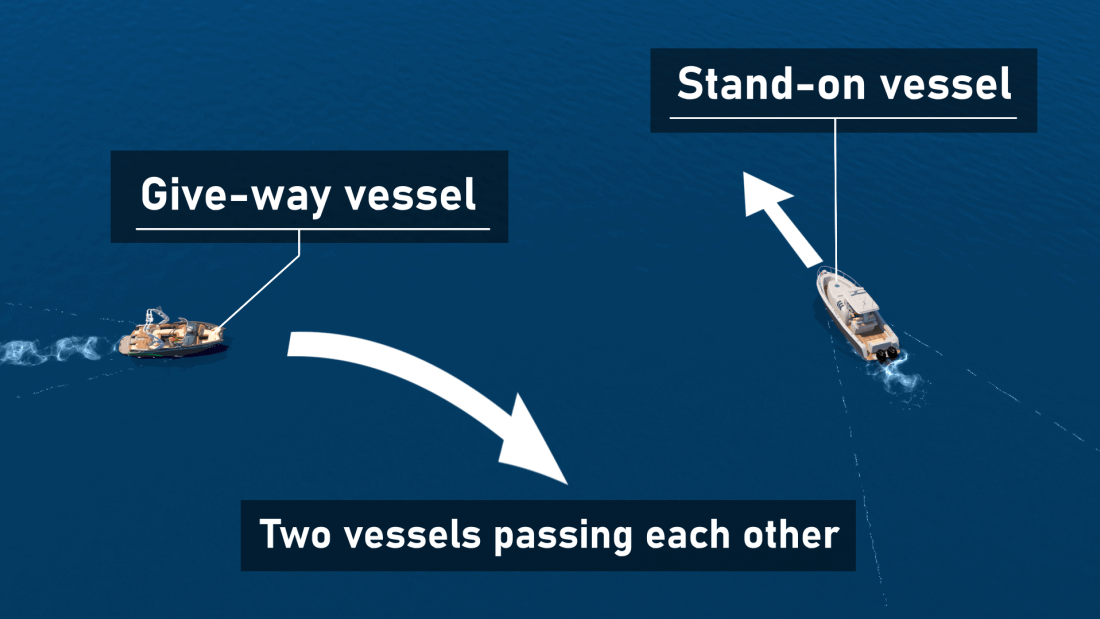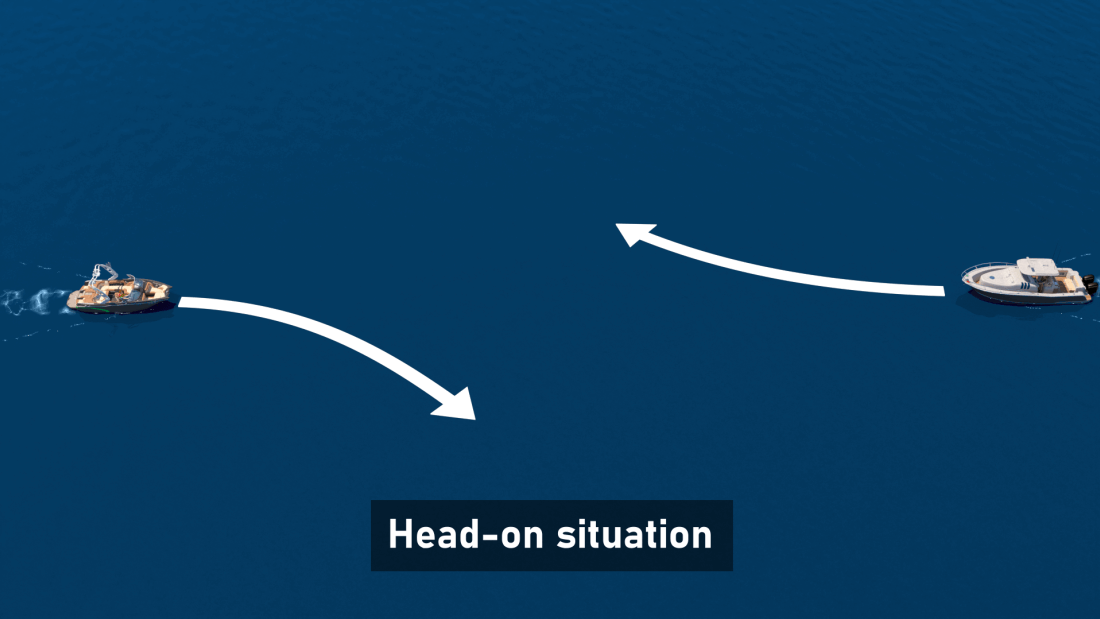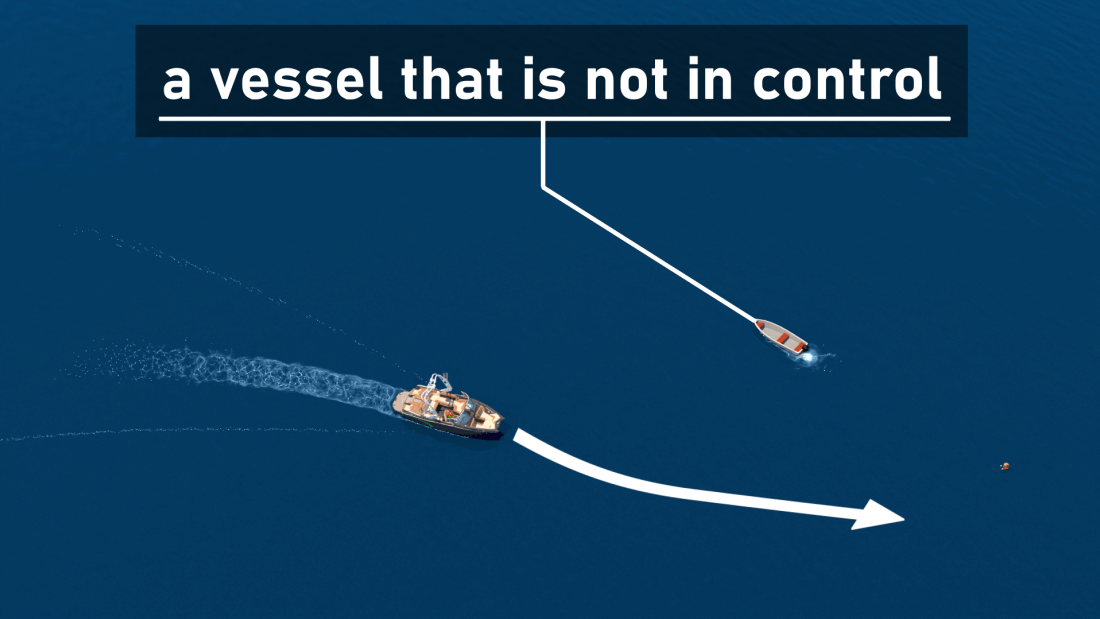Boating Rules of the Road - Navigation rules Collision Regulations - Rules of priority
Right of way Rules for Boaters
The Collision Regulations stipulate that in all pleasure craft and vessels, someone must maintain a proper lookout, at all times, for other vessels or pleasure crafts in order to reduce the chance of a collision between two or more pleasure crafts. At all times the pleasure craft’s operator must have a clear view of the waterways that he/she is navigating on. It is up to the operator of a pleasure craft to know and apply the International Regulations for preventing collisions at sea, and the Canadian modifications upon the high seas, and in all waterways connected therein, which are navigable by vessels.
Following a collision between two boats, make certain everyone is accounted for and check for injuries. Ensure that passengers and crew members are wearing a PFD. The Small Vessel Regulations require that certain vessels carry an emergency kit. Keep the proper equipment and supplies onboard to stop hull leaks and make minor on-water repairs.
If you are involved in an accident:
- You are required to stop and give assistance to other persons involved. You must give aid to the extent you can do so without endangering yourself or your passengers.
- You are also required to give your name and address and the number of your vessel, in writing, to the owner of any property damaged in the accident.
What does it mean to be the stand-on vessel?
The stand-on vessel should maintain its course and speed. The give-away vessel, may however take action to avoid collision if it is clear that the vessel which should be keeping out of the way is not taking appropriate action.

What does it mean to be the give-way vessel?
The give-way vessel should keep out of the way of a stand-on vessel, so far as is possible, take early and substantial action to keep well clear.
Which action should be taken when overtaking another vessel?
A vessel overtaking an other vessel shall keep out of the way of the vessel being overtaken. When a vessel is in any doubt as to whether she is overtaking another, she shall assume that this is the case and act accordingly.
Any alteration of course and/or speed to avoid collision must be important (noticable) enough to be easily seen by another vessel observing by sight or radar; a succession of small changes of course and/or speed, should be avoided.
Action taken to avoid collision with another vessel shall be to result in passing at a safe distance. This action will be taken in such a manner to be effective and safe, until the time that the other vessel is finally past and clear.
If necessary, a vessel shall reduce her speed to avoid collision with an other vessel.

What are the actions between two power-driven vessels approaching in a crossing situation?
When two power-driven vessels are crossing so as to involve risk of collision, the vessel which has the other on her own starboard side shall keep out of the way and shall, if such are the circumstances, avoid crossing ahead of the other vessel.
The operator of a powerboat should maintain his course when being approached on his port side by another powerboat.

What should the operators of two powered vessels do that approach each other in a head-on situation?
In a meeting situation neither vessel is the stand-on vessel. It is generally accepted that you should alter course to starboard and pass port-to-port.

Responsibility between vessels
Rules of priority
Newcomers to boating should familiarize themselves with the various types of vessels they may come across on the water to ensure they take the appropriate actions and avoid potential collisions.
When navigating, it's crucial for new boaters to understand which vessels have the right of way. It's important for all motorized boats and sailboats measuring under 20 meters in length to give way to larger, less agile vessels.
A power-driven vessel underway shall keep out of the way of a vessel not under command.

A power-driven vessel underway shall keep out of the way of a vessel restricted in her ability to manoeuvre.

A power-driven vessel underway shall keep out of the way of a fishing boat hauling its nets.

A power-driven vessel underway shall keep out of the way of a sailboat.

A sailboat underway shall keep out of the way of:
- a vessel not under command;
- a vessel restricted in her ability to manoeuvre;
- a fishing boat hauling its nets
A fishing boat when underway shall, so far as possible, keep out of the way of:
- a vessel not under command;
- a vessel restricted in her ability to manoeuvre.
Safe Speed
Make sure your boat is always operated at a safe speed to allow for quick and effective maneuvering to prevent collisions and come to a stop within a safe distance given the circumstances.
When navigating Canadian waters such as roadsteads, harbors, rivers, lakes, or inland waterways, exercise caution when passing another vessel or any work area like a dredge, tow, grounded vessel, or wreck.
Maintain a speed that won't disrupt the vessel or work being passed and adhere to any relevant Notices to Mariners or Notices to Shipping.
A general speed limit of 10 km/h within 30 meters of the shore applies to all power-driven vessels in specific regions, unless the river is narrow, or the vessel is in canals or marked channels, or a different speed limit is in effect.
Restricted Visibility
In conditions of restricted visibility such as fog, mist, rainstorms, or falling snow, vessels must navigate at a safe speed appropriate to the circumstances. Power-driven vessels should be prepared to maneuver promptly, while operators must reduce speed upon hearing fog signals, being in close proximity to another vessel, or detecting them on radar. Compliance with these rules is crucial to avoiding collisions and ensuring safe navigation.
